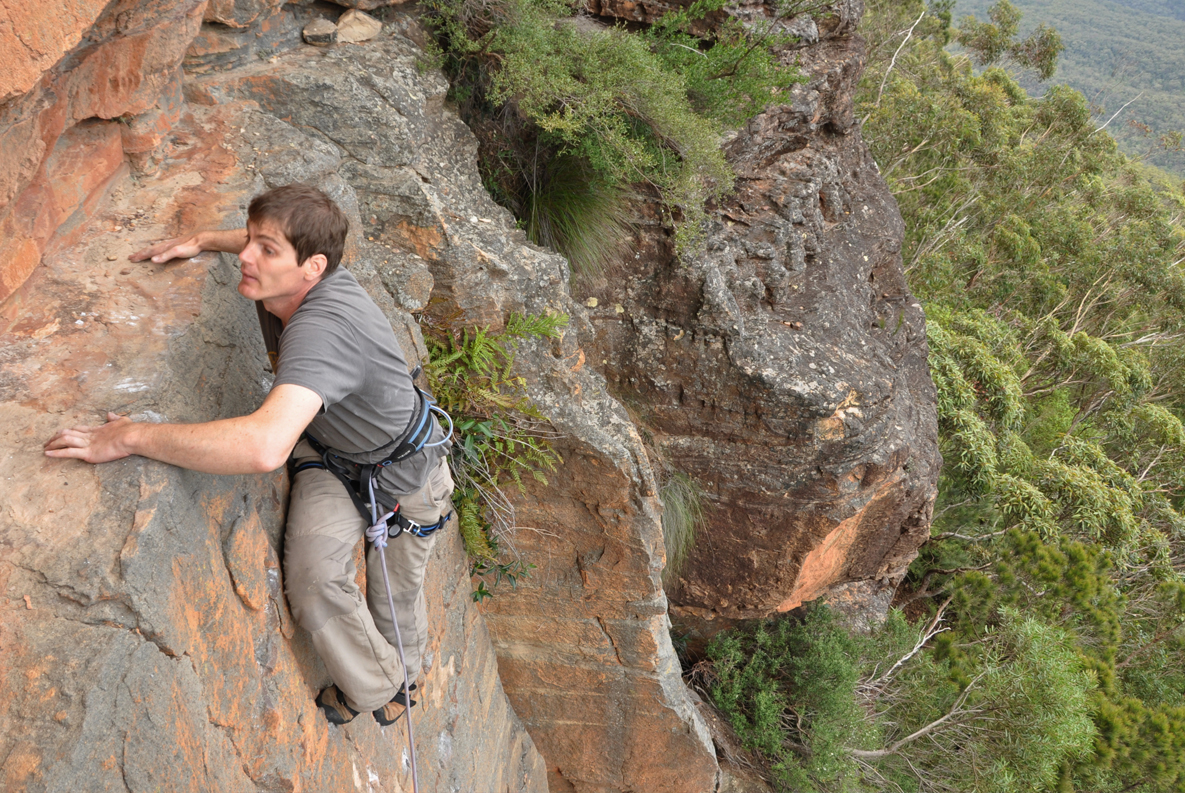The learning curve for rock climbing can be steep. It takes guidance, it takes mentorship, and it takes climbing—a lot of climbing. While there is no substitute to simply putting in the hours, as follows are seven avoidable mistakes that will accelerate your development.
1: Climbing with bent, strained arms
Muscling through moves with bent arms may provide slightly more power in some circumstances, but bent and strained arms are the primary cause of getting pumped (forearms swelling from exhaustion) for new climbers.
Try this: focus on keeping your arms straight as you climb with your weight hanging down to apply natural pressure onto the handholds. Additionally, when feeling tired, position your body in an orientation that allows you to straighten your arms and shake them out in an alternating fashion.
2: Saying, “But I don’t have any upper body strength!”
A common misconception is that climbing requires extensive upper body strength. If you believe that climbing is best reserved for bench-pressing gym rats, take a moment to watch the elegance and grace of Lynn Hill.
While stronger individuals may be able to quickly muscle their way through beginner climbs, this style will cause early developmental plateaus; technique always wins. As an aside, consider this, a quote from Rock and Ice:
Dani Andrada, one of the best climbers in the world, was rumored to have redpointed 50 5.13b’s before he even considered getting on a 5.13c.
While the grades 5.13b and 5.13c may not be on your current horizon, the message is simple: focus on getting better, not stronger.
3: Only looking up
Many beginners are looking only for the next handhold. But, climbers who fail to look at their feet will often overlook valuable resting positions and cause overexertion on moves due to poor foot placements.
Try this: imagine you have a 5-7 foot halo surrounding your body as you climb; be aware of which handholds lie ahead, but also maintain close attention to your feet and any options at your sides.
Related: 5 “Ninja Grabs” Every Climber Should Have
4. Utilizing poor hip technique
When just getting started, it is common to climb a rock wall like it’s a ladder: butt out, hips square with the wall, and feet forward. However, when climbing, it’s most natural to keep your hips close to the wall. Further, you generally want the hip of the arm you are reaching with against the wall.
For example, grasping a reachy left handhold will be most easily accomplished by placing your left hip against the wall with your left toes facing to the right and your right foot far out to the right side. Using predominantly your left foot with your left hip against the wall will provide excellent stability while also providing further reach than if your hips were square or reversed.
5: Beta spraying
What is beta? What is spray?
Beta is a term used to describe the necessary moves to complete a climb. The term beta spray means telling a climber who is attempting a route exactly which moves to do and how to do them. It’s important to only give a climber tips if he or she is seeking advice. Many individuals approach climbing as a puzzle and may prefer to fit the pieces together on their own.
6: Overlooking the importance of ethics
With the advent of gym climbing, it can be difficult for new climbers to understand appropriate ethics when climbing outdoors. It’s important to remember that climbing on natural rock is a privilege, and maintaining access is a very important issue.
Further, damaging rock or the general environment in any way is a major faux pas! Be responsible and preserve our natural wonders so that climbing can continue to be enjoyed for generations to come.
Related: Climbing Ethics: Vital Decison-Making Scenarios
7: Climbing unsafe
If new to the sport, climbing safe and developing proper habits early cannot be overemphasized. Here are a few pointers:
- Tie a knot in the end of the rope opposite the climber (the dead end) on single pitch/top rope climbs; on multi-pitches ensure that both the climber and belayer are tied into the rope. This prevents the end of the rope from sliding through the belay device in the case of it not being long enough on a given pitch.
- Wear a helmet.
- Perfect your belay technique; using a GriGri does not mean you can be sipping coffee with your brake hand!
- Whenever possible, descend a climb by foot rather than rappelling.
The American Alpine Institute explains:
There are more climber injuries and fatalities from mistakes rappelling than from any other place in all of climbing.
Now to you
Have these tips been helpful? What other recommendations do you have for new climbers? Leave your thoughts in the comments below.








